10 Catastrophic Solutions That Backfired Spectacularly and Made the Problem Worse
Khalid Elhassan – February 25, 2018
Good intentions often go awry, and that is why the road to hell is said to be paved with them. An illustration of that can be found in well meant solutions to problems that not only fail to solve them, but end up making the problem worse than if the solution had never been tried. There are even specific terms for the categories of fixes that end up worsening a problem, such as the “Streisand Effect”, whereby the attempt to hide or censor negative information simply draws more attention to it. Or “blowback”, which refers to the unintended consequences suffered by a country when a covert operation goes sideways.
Yet another one is the “Cobra Effect”, coined by the German economist Horst Siebert in his book, Der Kobra-Effect. The term arose from a specific historic incident discussed below in this article, in which a well intentioned but not very well thought out fix to a problem ended up backfiring in spectacular fashion. Today, “Cobra Effect” is used to describe the unintended consequences of well meaning but poorly planned incentive plans or regulatory schemes, that end up exacerbating a problem.

Following are 10 remarkable catastrophic solutions from history, that took a bad situation and made it worse.
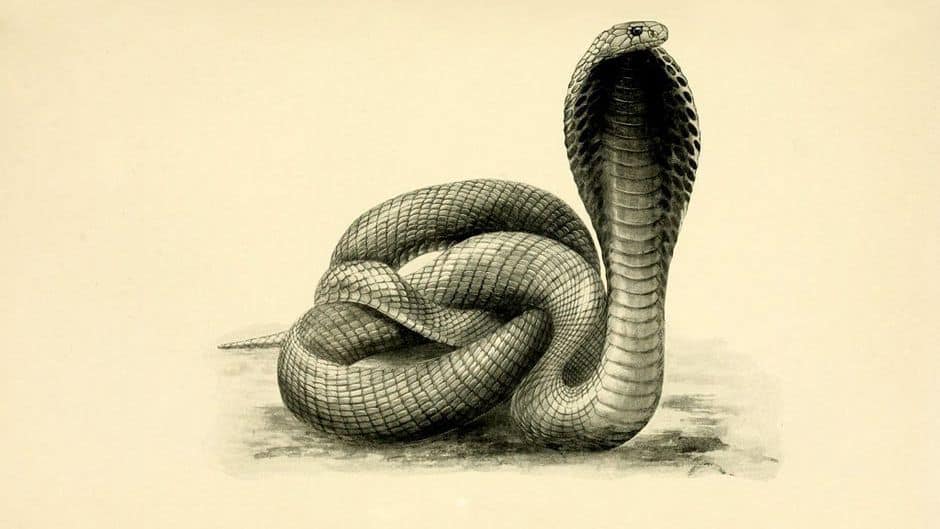
Colonial Efforts to Eliminate Pests End Up Multiplying the Pest Population
In the days of the British Raj, India’s colonial rulers grew concerned by large numbers of venomous cobra snakes infesting the city of Delhi. So the authorities offered a bounty for every dead cobra, payable upon delivery of its skin to designated officials. The plan seemed to be working great, and before long, natives were thronging to the drop off points, whose store rooms were soon bulging with cobra skins.
However, the incentive scheme did not seem have a noticeable effect on the city’s cobra population. No matter how many cobra skins were delivered to the authorities, Delhi seemed to be just as infested with the deadly snakes. City officials eventually figured out why: many locals had turned to farming cobras. Since the bounty on the snake skin was greater than the cost of raising a cobra, the British had unintentionally created a new cash crop.
When the authorities finally realized what was going on, and how their incentive scheme was being gamed, they cancelled the plan, and stopped paying out bounties for cobra skins. That turned out to be their second mistake. Without the bounties, cobra skins and captive cobras were now worthless. So Delhi’s cobra farmers did the economically sensible thing, and released the snakes back into the wild – the “wild” in this case being the city of Delhi. The snake infestation was increased by orders of magnitude, and Delhi wound up with many times more cobras than it had possessed before the authorities launched their ill advised plan, which gave rise to the term “Cobra Effect”.
French colonial authorities had a similar, albeit less catastrophic, experience in Hanoi, Vietnam, when they sought to enlist civilians in controlling a rat infestation. Like the British, the French authorities offered bounties for rats, to be paid out upon delivery of their tails. However, colonial officials soon began noticing rats scurrying around the city with no tails. Unlike the Indians of Delhi, the enterprising Vietnamese of Hanoi did not resort to farming rats. Instead, rat catchers would simply sever their tales, then release them back into the city so they could procreate and produce more rats, and thus maintain the rat catchers’ stream of revenue.

Authorities Try to Get Rid of a Beached Whale Carcass by Blowing it Up
In November of 1970, the Oregon State Highway Division not only had a problem on its hands, but a stinking whale of a problem. What to do with a 45 foot, 8 ton sperm whale, whose rotting carcass had washed up on a beach near the small coastal town of Florence, in Lane County, Oregon? Letting nature take its course, and allowing the whale’s carcass to decompose, was one option. However, the good people of nearby Florence were not too keen on spending the next few years enduring the stench of a rotting whale. Nor were they comfortable with the idea of swimming in waters reeking of whale runoff.
It had been so long since a dead whale had washed up in the region, that nobody could remember how to get rid of one. Without a frame of reference, the Highway Division concluded that dragging the behemoth off and burying it was not a good option, because decomposition gasses would destabilize the grave and uncover it. Cutting it up and then burying it would reduce that risk, but nobody could be found willing to cut up the stinking carcass.
So the authorities turned to dynamite: 20 cases, or half a ton of it. A military veteran with explosives training happened to be in the area, and he warned that authorities that 20 cases of dynamite was way too much. His advice that 20 sticks of dynamite would be enough was ignored by the authorities, who hoped that the blast would disintegrate the whale, with the resulting small pieces getting consumed by scavengers. As a Highway Division official told news reporters: “Well, I’m confident that it’ll work. The only thing is, we’re not sure just exactly how much explosives it will take to disintegrate this thing, so the scavengers, seagulls, and crabs and whatnot can clean it up“.
The dynamite was buried beneath the whale, primarily on the landward side so most of the carcass would get blown into the ocean. Scores of bystanders had gathered to watch the spectacle, and were moved back about a quarter of a mile away as a safety precaution. The onlookers cheered when the dynamite was detonated at 3:45 PM, on November 12th, 1970. However, their cheers quickly turned into shrieks of panic when it became clear that the authorities had greatly underestimated the blast zone, and the safe distance from it.

As it turned out, a quarter mile away from the explosion was way too close, as everybody and everything within half a mile of the blast got showered with rotting whale detritus. A huge piece of blubber flattened a parked car over a quarter of a mile away, while people and other vehicles were pelted by bits of stinky whale carcass. Miraculously, nobody was seriously hurt by the tons of whale flesh hurled into the air.
When the dust settled and rotting whale stopped falling from the skies, dismayed officials discovered that the bulk of the carcass had not even budged. As darkness fell, Highway Division crews were back on the scene to bulldoze and bury the remains, as they probably should have done in the first place. It is reasonable to conclude that if a whale ever washes up near Florence again, the authorities will remember not only what to do, but also what not to do.
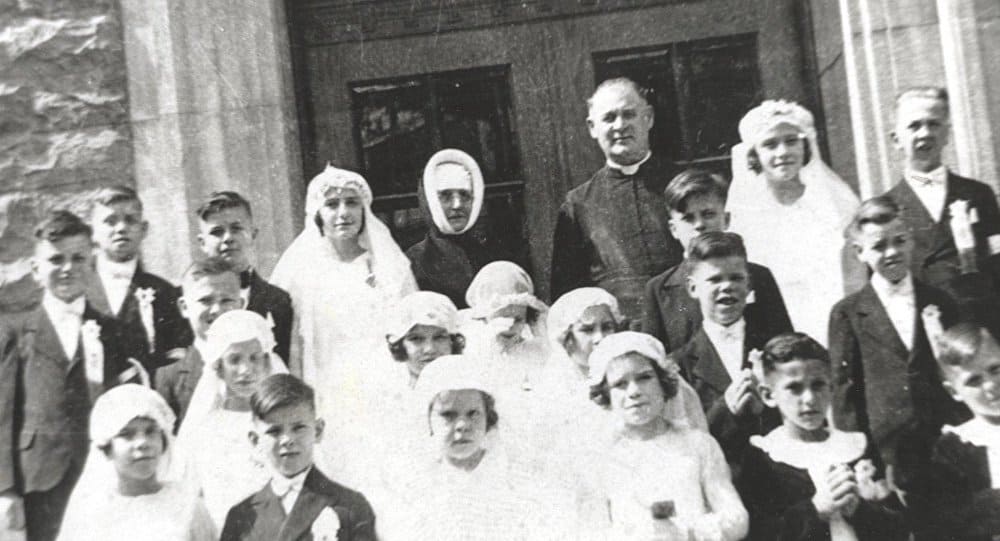
Government Subsidy Plan Leads to Deliberate Misdiagnosing of Thousands of Children
Before Quebec’s “Quiet Revolution”- a period of secularization and major social and political changes in the 1960s – the Catholic Church held significant, and sometimes pernicious, sway over that Canadian province. The 1940s and 1950s in particular were considered an era of widespread poverty, few social services, and Catholic Church predominance.
In those dark days, Maurice Duplessis, a strict Catholic, became premier of Quebec. He immediately proceeded to place the province’s schools, orphanages, and hospitals, in the hands of various Catholic religious orders. Duplessis then hatched a scheme with Church authorities to game the Canadian federal government’s subsidy assistance program to the provinces. The goal was to divert as many taxpayer dollars as possible into the coffers of Quebec’s Catholic Church.
Canada’s federal subsidy program incentivized healthcare and the building of hospitals, more so than other social programs and infrastructures. For example, provinces received a federal contribution of about $1.25 a day for every orphan, but more than twice that, $2.75, for every psychiatric patient. So Duplessis and the Catholic Church set up a system to falsely diagnose orphans as mentally deficient, in order to siphon more federal subsidy dollars into the Church’s coffers. As a first step, Duplessis signed an order that instantly turned Quebec’s orphanages into hospitals. That entitled their religious order administrators – and ultimately the Catholic Church of Quebec – to receive the higher subsidy rates for hospitals.
It took decades before the scandalous state of affairs was finally uncovered. By then, over 20,000 otherwise mentally sound Quebecoise orphans had been misdiagnosed with psychiatric ailments. Once they were misdiagnosed, the orphans were declared “mentally deficient”. It was not just a paperwork technicality: the orphans’ schooling stopped, and they became inmates in poorly supervised mental institutions, where they were subjected to physical, mental, and sexual abuse by nuns and lay monitors.
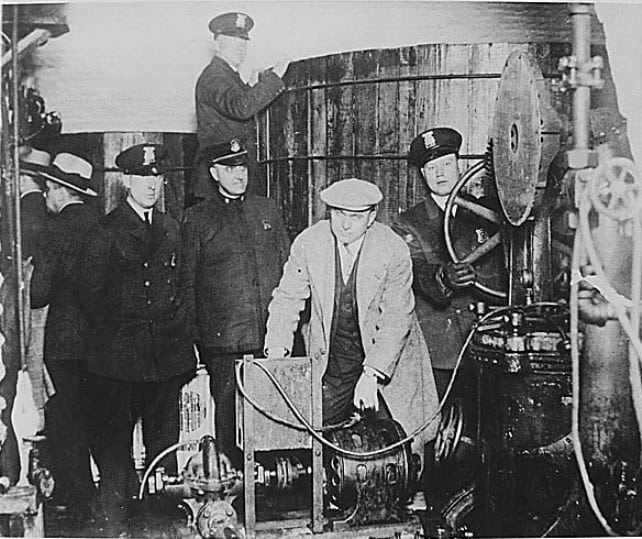
Until the 20th century, America had next to no history of organized crime as the term is understood today. American cities had plenty of gangs, but they were local affairs, comprised of street thugs whose reach and influence seldom extended beyond a radius of a few city blocks. Irish immigrants in particular had dominated the street gang scene in the 19th century, as dramatized in the 2002 Hollywood epic, Gangs of New York.
As new waves of immigration reached America’s shores, the Irish gangs found themselves rubbing shoulders with, then gradually getting shouldered out of the way, by other ethnic street gangs. By the early 20th century, Italian gangs had been established in numerous American cities, particularly in the northeast, and most notably in New York City. Like their Irish predecessors, the Italian gangs were small scale operations of no particular distinction to set them apart from other ethnic gangs. Their operations were confined to Italian neighborhoods, where they preyed upon Italian immigrants in a variety of ways, such as protection rackets, prostitution, theft, and robbery.
That changed dramatically in 1920, with the commencement of Prohibition, banning the manufacture, transport, or sale of alcohol. Unfortunately, the mere act of declaring alcohol illegal did not reduce the high public demand for booze. What it did was skew societal attitudes, and create an environment of widespread public tolerance of crime in order to provide the masses with the alcohol they craved.
Essentially, Prohibition took the alcohol industry – a major American industry that had operated legally until then – and gifted it, along with its enormous and now untaxed revenue, to the criminal world. Legal and relatively well regulated (and taxed) enterprises that had operated the American alcohol industry were driven out of business. Their place was taken by organized crime, whose profits from alcohol enabled them to increase their other illegal activities such as racketeering, prostitution, the growing field of illegal narcotics, gun running, etc. The profits also enabled organized crime to corrupt the American political and criminal justice system to failed state levels, by showering bribes upon politicians, officials, cops, and judges.
Similar to illegal narcotics today, the profits that could be made from illegal alcohol were astronomical, and seemingly overnight, bootlegging became irresistible to criminal organizations across America. Their task was made easier by much of the public, as well as many cops and politicians, who did not see the sale or consumption of alcohol as particularly venal or morally blameworthy.
The end result was a boost to organized crime in general, and to Italian organized crime in particular. In this new environment, Italians gangsters found themselves particularly well positioned to take advantage of the situation and prosper beyond their wildest dreams. What set Italian gangsters apart from other ethnic criminal was the mafia in the Old Country. Thanks to the mafia, ethnic Italian criminals in the US could draw upon a tradition of sophisticated, organized, hierarchical, and disciplined criminal organizations.
Unlike their ethnic criminal competitors, Italian gangsters not only had an effective model to replicate, but also experienced personnel who could readily duplicate the Old Country’s system in the US. Prohibition was eventually repealed in 1933, and the American alcohol industry was restored to well-regulated legality. By then, however, modern organized crime, and the Italian-American mafia, had become well established and well nigh ineradicable. They remain with us to this day.
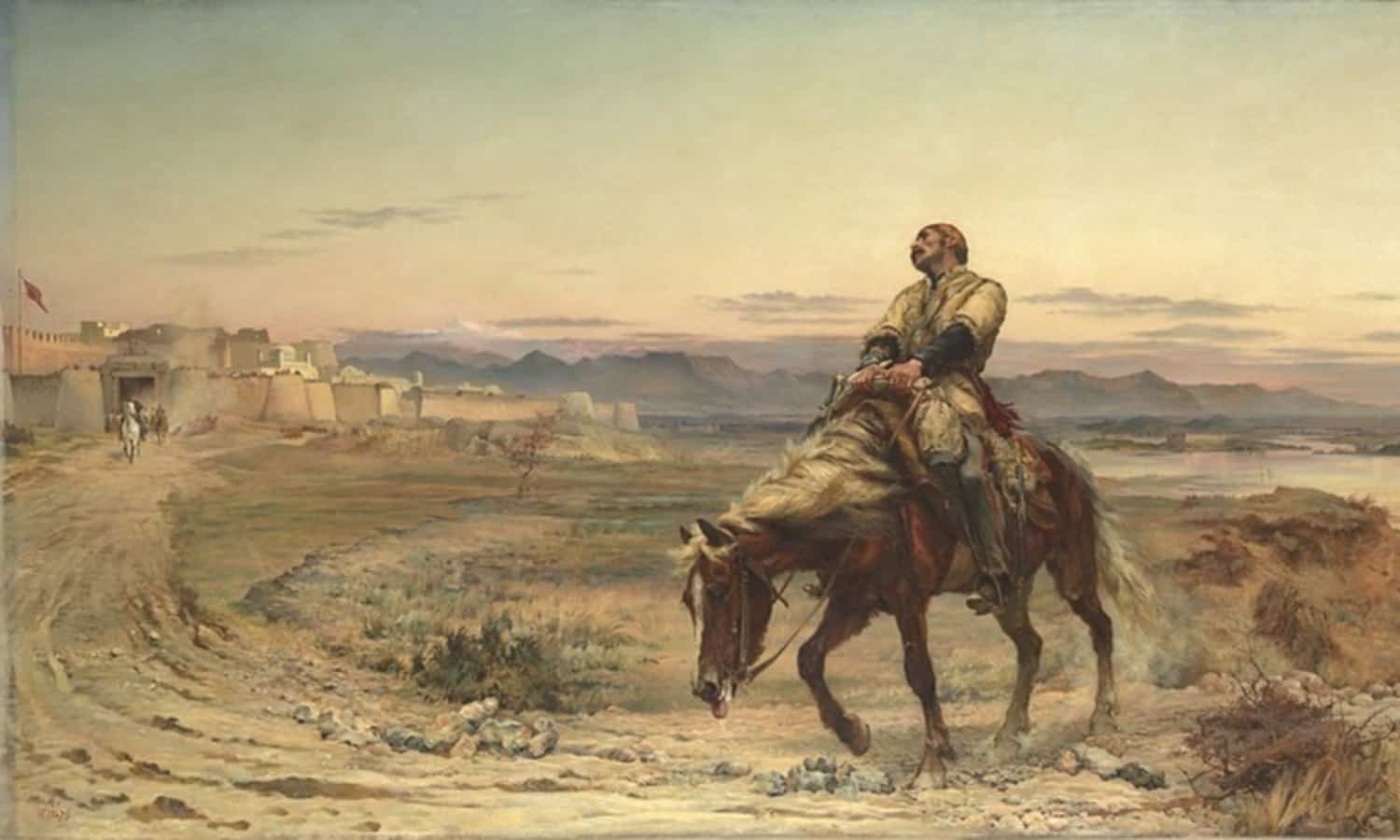
British Invade Afghanistan and Set Up Puppet Ruler, End Up Losing Entire Army
“The Great Game” was the term coined for the decades of jockeying for influence in Central Asia between the British and Russians during the 19th century. As the Russians pursued their version of “Manifest Destiny” in the region, the British suspected them of coveting India. So they did their best to keep Russian borders far away from Britain’s most prized imperial possession.
Afghanistan, which lay between India and Russia’s steadily expanding borders in Central Asia, was a flashpoint between the Great Game rivals. In the 1830s, an Afghan king became too friendly with Russia for Britain’s tastes, so the British invaded Afghanistan in 1839 and deposed its Russophile ruler. They replaced him with a British puppet in Kabul, backed by British garrisons in Afghanistan’s capital and key cities. The British made themselves comfortable, and it seemed only a matter of time before the country was annexed to British India.
However, the Afghans grew troublesome, and Britain’s pet ruler was unable to control his countrymen. By 1841, disgruntled Afghan tribes rose in revolt against the British and their puppet. Soon, the countryside was lost and supply lines to India were cut off. British control shrank to the garrisoned cities, and before long, it was reduced to the grounds of their fortified garrisons.
A face saving measure was needed to extricate the British from what had become an untenable situation. So the puppet ruler was pensioned off, and the ruler whom the British had deposed in 1839 was recalled. In exchange for getting reinstalled, the old ruler promised to control the Afghan tribes long enough for an orderly and peaceful British withdrawal from Afghanistan. Things went sour, however, when the reinstalled ruler either reneged on his promise, or proved incapable of controlling the Afghan tribes.
Advertisement
On January 6th, 1842, the British set out from Kabul amid falling snow. Their column of 16,500 soldiers and civilians was barely a mile beyond the city before it began taking sniper fire from the surrounding hills. By day’s end, emboldened Afghan tribesmen were dashing in and out of the column to loot its supply train and slaughter whomever they could lay their hands on.
Many in the British column froze to death that night, as they camped in the open without tents. With the morning, some Afghan chieftains arrived to demand that the British halt while they tried to ensure the safety of the route ahead. They also extorted a huge bribe from the British, browbeat them into signing an agreement to withdraw immediately from all of Afghanistan, and received British officers as hostages. By the following day, when the British resumed the march, many of their soldiers had become too weakened by the cold to fight. As they entered a narrow pass, Afghans opened fire from the heights above, and the British suffered 3000 casualties by the time they had stampeded to the other side.
Next day, the British were shaken down for more money and more hostages, in exchange for empty promises to rein in the tribesmen. On January 11th, the British commander and his deputy were forced to surrender in exchange for yet another promise of safe passage. Soon thereafter the British found their path barred, this time for good, by entrenched Afghans who had blocked and fortified a pass. A desperate charge to break through was attempted, but it was beaten back.
A week after setting out from Kabul, the last group of survivors formed a tiny square on January 13th to make a last stand. All were killed. Later that afternoon, British sentries in Jellalabad, on the lookout for the arrival of the Kabul garrison, saw a single rider approaching. It was a Dr. Brydon, the sole survivor of the British retreat from Kabul.
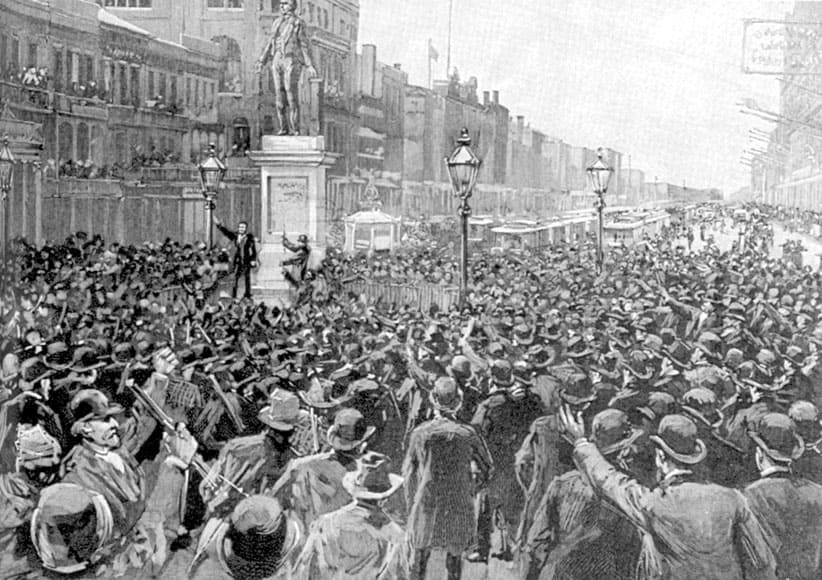
Mobsters Murder Anti-Mob Sheriff, Trigger Mass Lynching of Mobsters
Conventional wisdom has it that the Italian-American mafia had it its roots in New York City, home of the Five Great Crime Families and the Godfather, and the destination of millions of Italian immigrants in the late 19th and early 20th centuries. In reality, however, America’s first Italian mafia emerged deep in the heart of Dixie, in New Orleans.
The favored destination of southern Italian immigrants for much of the 19th century was not the US, but Argentina and Brazil, whose culture, languages, religion, and climate were more agreeable to Italians. New Orleans became a secondary destination during the 19th century, because of its extensive traffic with those south American countries. As the New Orleans Times reported in 1869, that city’s Second District was overrun with “well-known and notorious Sicilian murderers, counterfeiters and burglars, who, in the last month, have formed a sort of general co-partnership or stock company for the plunder and disturbance of the city.”
By the 1870s, Italian immigrants had established the Matranga crime family in New Orleans. Operating out of a salon and brothel, they expanded their activities from prostitution to labor racketeering and extortion rackets. They collected “tribute” from Italian workers, as well as from a rival Italian crime family, the Prozenzanos, who monopolized fruit shipments.
Fighting broke out in the 1880s between the crime families, over control of the New Orleans waterfront. As each family brought in more goons from the old country, the violence spilled over, putting pressure on the authorities to act. When New Orleans’ police chief launched an investigation, he was assassinated in 1890. His dying words before expiring were “the Dagoes shot me“.
19 mafiosi were arrested and prosecuted, but in a first trial of 9 of them, the mafia tampered with the jury. Despite overwhelming evidence, 6 were acquitted outright, while the remaining 3 got hung juries. Next day, March 14th, 1891, a mob of thousands, including some of New Orleans’ most prominent citizens, gathered. They broke into the prison housing the defendants, and lynched 11 of them – the biggest single mass lynching (as opposed to massacre) in US history.
It was an object lesson that the mafia never forgot. Unlike Sicily and southern Italy, where criminals could act in brazen contempt of the authorities and society, there were limits to what could be gotten away with in America. From that day to the present, the Italian-American mafia followed strict rules against targeting law enforcement, lest doing so invite a backlash ruinous to their business and to their health.

Pioneering Astronomer Holds in Pee to Avoid Breach of Etiquette, Dies of Urine Poisoning
Tycho Brahe (1546 – 1601) was a Danish astronomer whose observations were the most accurate possible before telescopes were invented. He accomplished that by being one of the first astronomers to use exacting empirical facts and the scientific method to conduct a systematic study of the cosmos. His measurements, and astronomical instruments invented by him, paved the way for future advances in astronomy. Johannes Kepler, one of his assistants, would use data collected by Brahe to formulate his laws of planetary motion.
Brahe was born into a wealthy aristocratic family, and raised by a childless uncle who paid for his education and sent him to study law. However, after witnessing a solar eclipse at age 14, Brahe developed a passion for astronomy. He kept going to law lectures during the day keep his uncle happy, but his heart, and his nights, were devoted to studying the stars.
Observations made by Brahe in 1563 revealed that all existing almanacs were inaccurate, so he devoted his life to correcting them by making accurate observations of the skies. He began travelling extensively throughout Europe, making observations and collecting instruments. During his travels, he lost half his nose in a duel, and for the rest of his life, he wore a metal prosthetic over the missing part.
The deaths of Brahe’s father and uncle left him a wealthy heir, with the financial means to pursue his passion for astronomy. In addition to accumulating accurate observations, Brahe was also a visionary. One of his major breakthroughs was the theory that the stars were not fixed in the sky, as was believed at the time, but moved, and had life cycles of birth and destruction.
By 1601, Brahe’s career was full of accomplishments, making him one of the giants upon whose shoulders future luminaries in the field of astronomy stood. In October of that year, while at a banquet in Prague, he felt an urgent need to urinate. However, he resisted getting up and doing so because he thought it would be bad manners, and a breach etiquette. By the time he got home, his bladder was damaged, and he was unable to urinate at all. He died 11 days later, most likely from uremia – urine in the blood.

Stalin Worries About Provoking German Attack, Ignores Intelligence of Actual German Plans to Attack
The world was stunned on August 23rd, 1939, when Nazi Germany and the communist USSR, avowed enemies, signed the German-Soviet Non Aggression Pact. It was a benevolent neutrality treaty that divided Eastern Europe between Germany and the USSR. It freed Hitler to turn against Britain and France in the west, without fear of war with the Soviets in the east. A week later, he launched WWII by invading Poland.
The Fuhrer’s ultimate aim was an empire in the east, at Soviet expense. So he intended the Pact as a temporary measure to free him to deal with the Western Allies, before turning on the USSR. Stalin, however, thought that the Pact was more solid. He realized that war with Germany was inevitable, but reasoned that Hitler would settle the war against Britain before turning against the USSR.
By 1939, Stalin was the center of a personality cult that painted him as infallible. He began believing some of the hype about his supposed omniscience, and that omniscience told him that Hitler would not attack anytime soon. He was also surrounded by yes men, who dared not contradict him. Moreover, Stalin had gone far out on an ideological limb by signing the treaty with communism’s avowed enemy. War breaking out with Germany so soon after signing the treaty would mean that Stalin was wrong, and saying that Stalin was wrong was ill-advised.
When evidence mounted of an impending German attack, Stalin refused to believe it, dismissing it as fake news, incompetence by Soviet agents, a plot by British intelligence to instigate a war with Germany. Those who raised the alarm were punished, as Stalin insisted their evidence was part of a British plan to provoke a Soviet-German war, to use the Soviets “as a cat’s paw to pull the capitalists’ chestnuts out of the fire“. Red Army commanders were prohibited from taking precautionary measures, lest they provoke Hitler.
Thus, when the Germans struck on June 22nd, 1941, the Soviets were caught off guard. Even hours after the invasion had actually begun, Stalin disbelieved Soviet commanders reporting that they were being overrun, insisting that they were experiencing border clashes, not war. The Soviets survived only by the skin of their teeth, before the German advance finally ran out of steam that winter, within sight of the Kremlin. In the first six months of the war, the USSR suffered over 6 million military casualties, plus millions more civilian casualties – more than any country has ever suffered in a similar period.

Israeli Government Tries to Save Money by Dismissing Warnings of Impending Attack, Suffers Worst Military Setback in Israeli History
Israel defeated Egypt and seized the Sinai Peninsula in the 1967 Six Day War. Thereafter, Egyptians and Israelis glared at each other across the Suez Canal, as years of low intensity warfare simmered, comprised of artillery exchanges, commando raids, and air attacks. In the meantime, Egypt rebuilt, reorganized, and retrained its military for a rematch that all knew was coming.
Years before the attack, Egyptian president Anwar Sadat began running massive military maneuvers near the Suez Canal, in order to accustom the Israelis to large scale Egyptian troop movements in vicinity of the Sinai. That way, when the time came for the actual attack, the Israelis would be lulled into dismissing its preparations as just another drill.
By mid 1973, however, a highly placed Mosad agent had informed the Israelis of the Egyptian plan of attack. What the Israelis did not know was when the attack would begin. Israel’s small population precluded a large permanent military establishment, so knowing the when was vital. Israel could not afford to mobilize hundreds of thousands of soldiers indefinitely, just to have them ready when the Egyptians finally got around to attacking. Instead, Israel used a small standing military, that would get fleshed out in time of war with a rapid mobilization of civilian reservists. Such mobilizations were highly disruptive and expensive, however, and the mass of civilians taken from their daily occupations could not be kept in uniform for long.
The Egyptians played upon that vulnerability. Months before the planned attack, the Egyptians tricked the Israelis into believing that an attack was imminent, causing Israel to declare a disruptive and expensive emergency mobilization. No attack came, and the Israeli government ended up with egg on its face. Thus, when the Egyptians began preparing for the real attack a few months later, the Israeli government, burned once by a false alarm, was reluctant to call another mobilization.
A week before going to war, the Egyptians carried out major military maneuvers near the Suez Canal, during which they called up reservists. Israeli intelligence dismissed it as just another drill. To further lull the Israelis, the Egyptians announced the demobilization of the reservists called up for the “military exercise”, two days before launching their attack..
Reluctant to declare another expensive and disruptive mobilization, the Israeli government ignored dissenting voices sounding the alarm that Egypt was preparing for actual war. So when the Egyptians attacked across the Suez Canal on October 6th, 1973, Israel was caught off guard and wrong footed. The Israeli Defense Forces sustained high casualties as their forward fortifications were swiftly overrun, and the Egyptians secured a beachhead on the eastern side of the canal. The IDF eventually clawed its way back up, encircled an Egyptian army weeks later, and prevailed in the war. However, their early setbacks and high casualties at war’s beginning were a direct result of the Israeli government’s attempt to save some money.
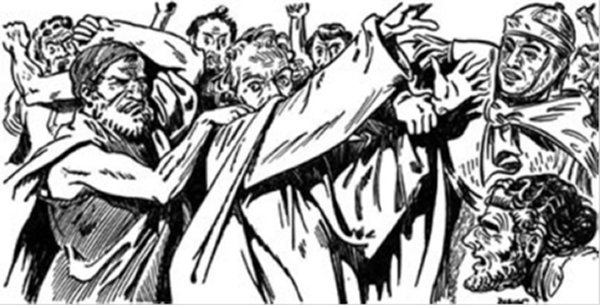
Authorities Warn Citizens to be on Lookout for Saboteurs, Trigger Ruinous Paranoid Panic
In 1629, the governor of Milan, Italy, received an alarming message from king Philip IV of Spain. It warned him to be on the lookout for four Frenchman recently escaped from a Spanish prison, and who might be en route to Milan to spread the plague via “poisonous and pestilential ointments“. Word spread, as the Milanese were instructed by the authorities to be on the lookout for suspicious characters and potential poisoners. The warning fell on fertile soil, since fears that sinister people planned to spread a plague throughout Christendom were rampant in 17th century Europe.
Tensions mounted in Milan in subsequent months, as citizens kept a lookout for suspicious figures. With each passing day, Milanese nerves grew more frazzled and tensions were heightened, as fears mounted of an imminent poisoning. After months of sitting on a powder keg, the city finally erupted in what came to be known as “The Great Poisoning Scare of Milan”.
On May 17th, some Milanese reported mysterious people placing what appeared to be poison in a cathedral partition. Authorities found no evidence of poisoning, but by then, paranoia had gripped the city. The following morning, the Milanese woke to find that all doors on the main streets had been marked with a mysterious daub. Health officials inspected the daubs, found nothing harmful in them, and concluded they were a prank by trolls getting some laughs out of the citizens’ fears.
The Milanese were past official reassurances, however. Taking the mysterious daubs as a sign that the long-anticipated poison attack was finally underway, the citizens gave in to a collective bout of paranoid insanity, and began accusing random people. The accused ran the gamut from strangers on the streets, to various nobles, to Cardinal Richelieu of France or general Wallenstein, commander of the armies of the Holy Roman Empire in the then-raging Thirty Years War.
One of the early victims of the mass paranoia was an old man, spotted wiping a bench in church before sitting down. A mob of crazed women accused him of poisoning the seat, seized him, and began beating him up in church. They dragged him to the magistrates, continuing their violent assault upon him along the way, and ended up killing him en route.
On another occasion, a pharmacist was accused of being in league with the Devil when he was found with unknown potions. After prolonged torture, he changed his protestations of innocence to a confession of guilt, repeating whatever his torturers wanted to hear in order to end the pain. Admitting to working for the Devil and foreigners to poison the city, the pharmacist named other accomplices who were innocent of any crime. They in turn were arrested and tortured, and to end their suffering, they named yet more innocents, repeating the process. All were tried, convicted based on the confessions extracted under torture, and executed.
As paranoia and insanity tightened their grip on the city, many Milanese stepped forward to accuse… themselves. Many went to the magistrates and voluntarily confessed to supernatural deeds, describing meetings with the Devil, witches, sorcerers, and sundry practitioners of black magic, in which they plotted to poison city. As reported, “The number of persons who confessed that they were employed by the Devil to distribute poison is almost incredible“. Many were executed based on their voluntary false confessions.
Where did we find this stuff? Here are our sources:
BBC – War Warnings Stalin Ignored
CNN – When Italian Immigrants Were ‘The Other’
Cracked – 7 Serious Problems That Had Hilarious Cartoon Solutions
Encyclopedia Britannica – Tycho Brahe
Encyclopedia Britannica – Yom Kippur War
Guardian, The – How Prohibition Backfired and Gave America an Era of Gangsters and Speakeasies
64 PARISHES – Sicilian Lynchings in New Orleans
New York Times, May 21st, 1993 – Orphans of the 1950s, Telling of Abuse, Sue Quebec
Thought Co. – Massacre of British Army in Afghanistan in 1842
